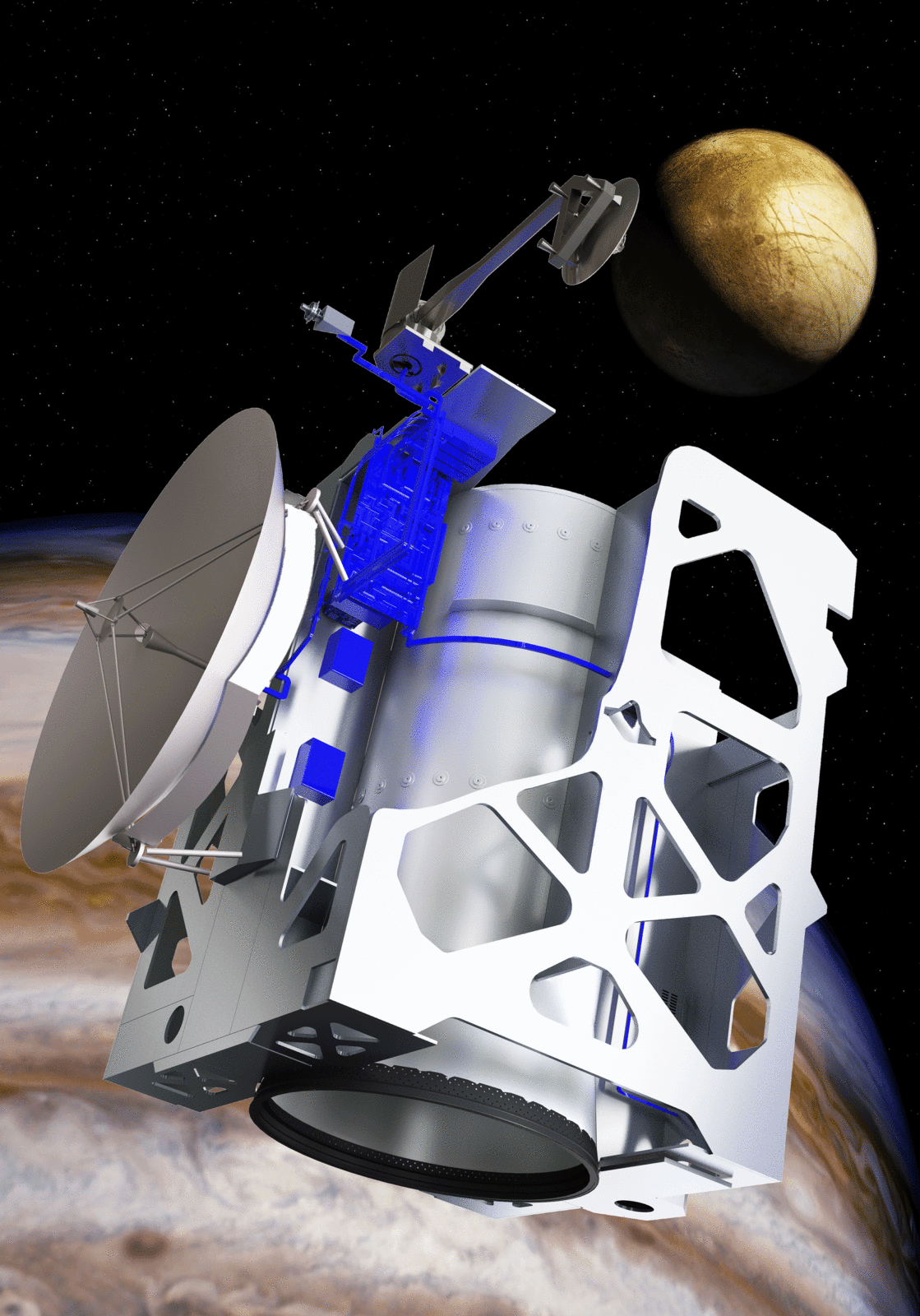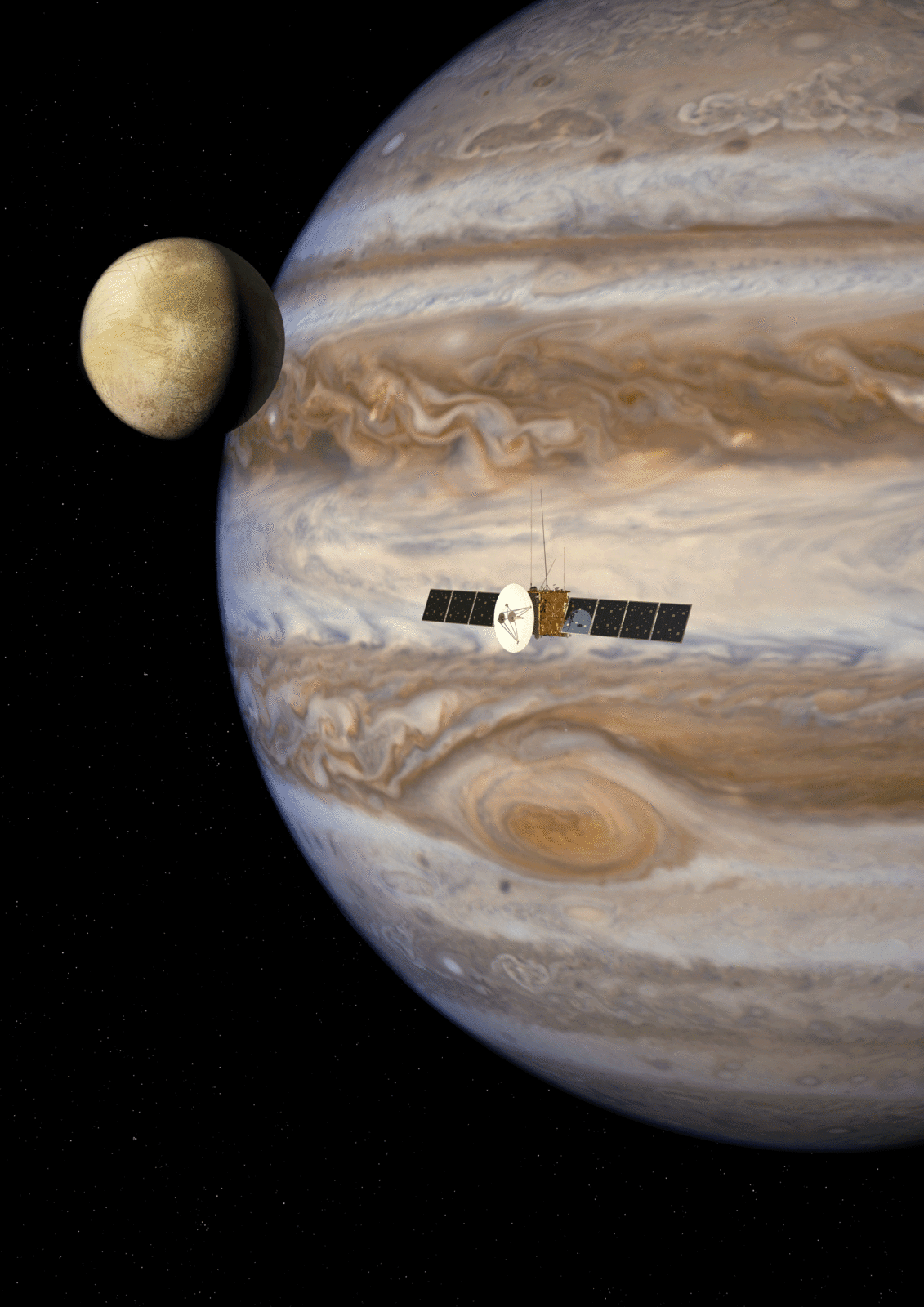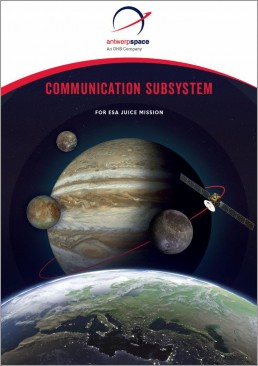JUICE (JUpiter ICy moons Explorer) is the first large-class mission of Cosmic Vision 2015-2025, a programme of the European Space Agency (ESA).
The JUICE spacecraft provides a thorough investigation of the Jovian system in all its complexity.
Jupiter's Icy Moons
The emphasis here is on three of its largest, icy moons: Ganymede, Europa and Callisto. The JUICE spacecraft also looks at the potential habitability of two of them. It will be the first spacecraft ever to orbit a moon (Ganymede) of a giant planet.
The scientific instruments on board of the spacecraft perform local measurements of Jupiter’s atmosphere and plasma environment. They also make remote observations of the surface and interior of the three icy moons.
JUICE: the electrical power of a micro-wave oven
The total generated electrical power of the JUICE spacecraft is less than 1000 Watt. That’s only as much as a micro-wave oven. Furthermore, with a signal power comparable with that of a light-bulb it provides a daily downlink of at least 1.4 Gb.
Our involvement
Antwerp Space is responsible for designing, integrating and testing the complete communication subsystem. We also supervise the subcontracting of the detailed design and manufacturing of the different units to companies in Europe.
Lots of challenges
The communication subsystem enables the communication link with Earth during the JUICE mission. The large distance of Jupiter to Earth – 588 to 968 million km – results in a signal round trip time of up to 1h 46 m. Of course, that complicates spacecraft operations.
Furthermore, Jupiter has a very harsh radiation environment. The protection of sensitive electronic equipment is required. That’s why the communication subsystem transponder is shielded within a metal vault.
The communication subsystem also incorporates two radio-science experiments, provided by ESA.:
- The Ultra-Stable Oscillator (USO)
- The Ka-band Transponder (KaT)
These radio-science experiments are from the Gravity and Geophysics of Jupiter and the Galilean Moons Experiment (3GM)


Timeline
- 2016: Signature of the contract between Airbus and Antwerp Space for supplying the JUICE communication subsystem
- 2023: Launch by the European Ariane rocket. Then the spacecraft cruises for 7,4 years towards Jupiter, based on Earth-Venus-Earth-Mars-Earth gravity assists.
- October 2029: After 6 billion km, JUICE performs several fly-bys of Jupiter, Callisto and Europa over a time span of 2,5 years.
- End 2032:The spacecraft is inserted into a final 500 km circular orbit around Ganymede, where it remains forever.
About the moons
Galileo Galilei discovered Ganymede, Europa and Callisto in 1610. They were the first group of objects found to orbit another planet. Apart from the Sun and the eight planets, they are among the largest objects in the Solar System. Ganymede is the largest moon in the Solar System and is even bigger than the planet Mercury.
